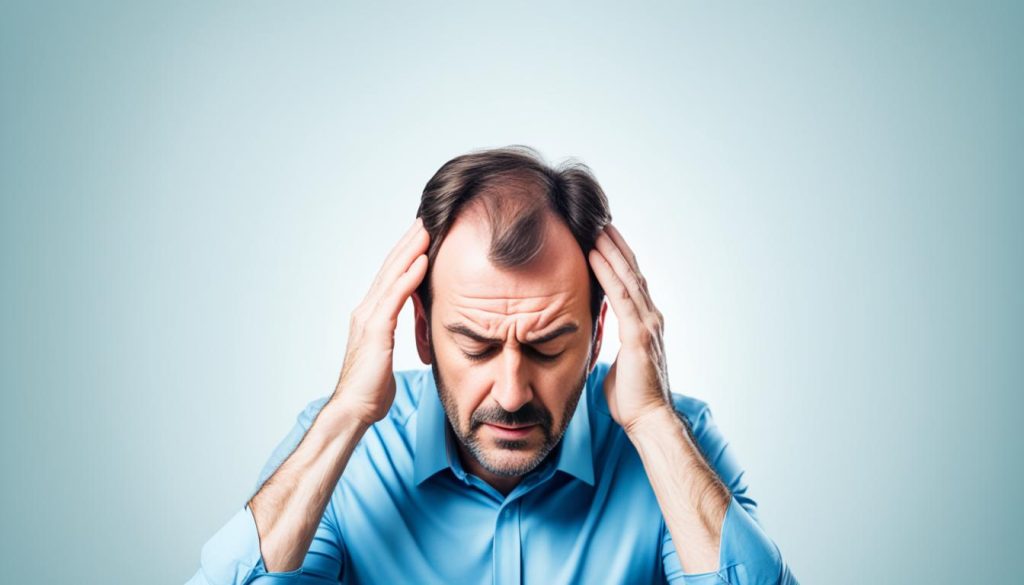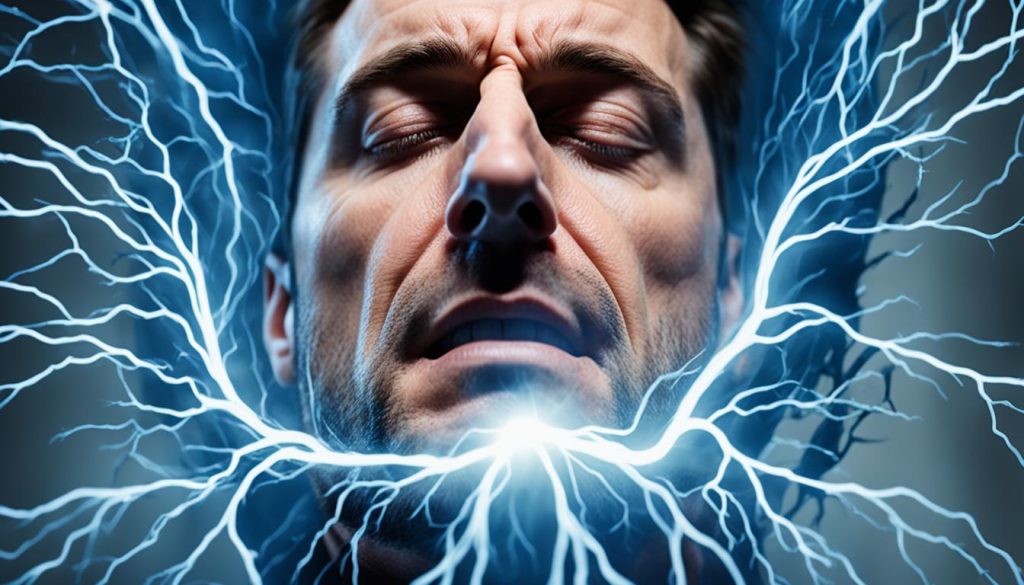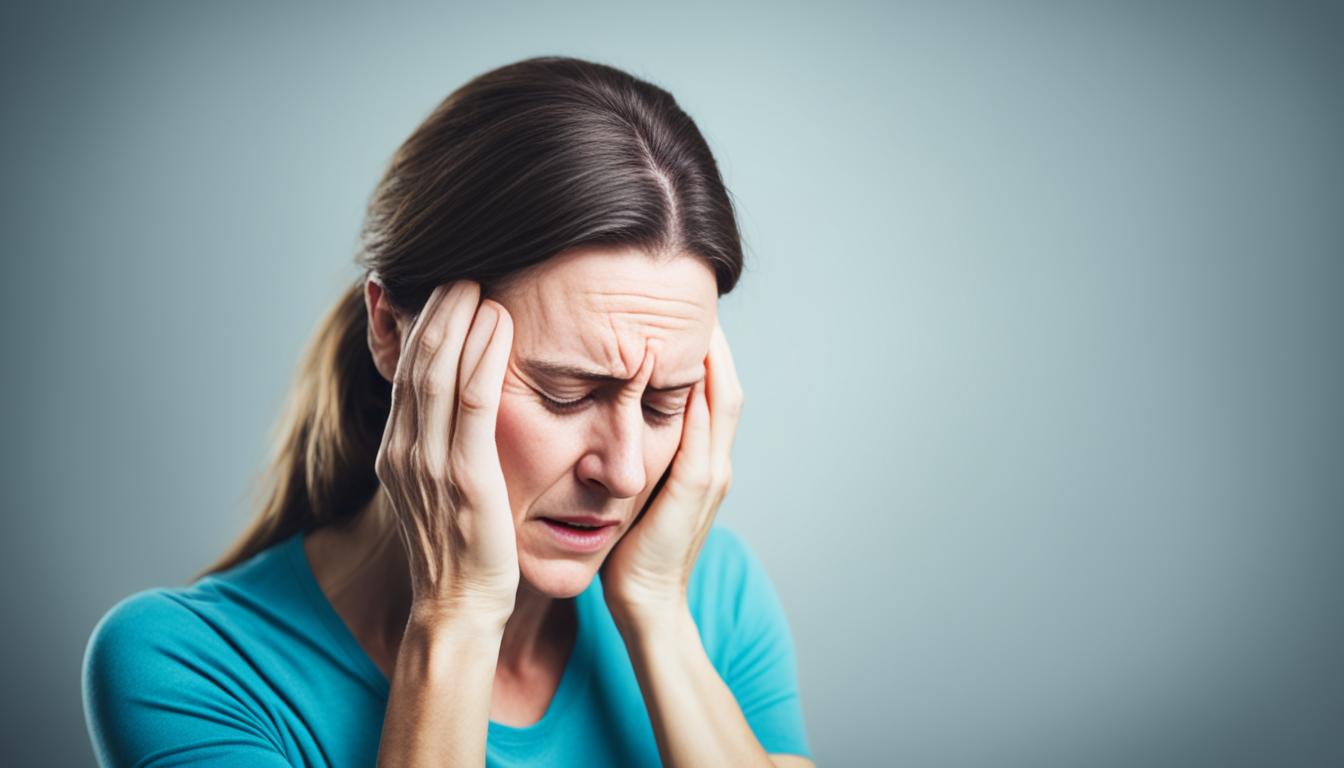Do you ever experience a sensation of intense pressure in your head when you bend down? If so, you’re not alone. Many people find themselves dealing with this uncomfortable feeling, which can range from a mild discomfort to a more severe headache. In this article, we will explore the reasons behind head pressure when bending over and discuss potential causes, symptoms, diagnosis, and treatment options.
When you lean forward or lower your head, you may feel pressure building up in your head. This sensation can be accompanied by other symptoms such as head pain, dizziness, or a feeling of heaviness. Understanding why this happens is key to finding relief and managing these episodes.
There are several potential causes for head pressure when bending down. Sinus issues, such as infections or inflammation, can lead to increased pressure in the sinus cavities, resulting in head pain when bending over. Dehydration, migraines, tension headaches, and other factors can also contribute to this discomfort. Identifying the underlying cause is crucial in implementing the right treatment plan.
In the next sections, we will delve deeper into the common causes of headaches when bending over, explore positional headaches and other potential causes, discuss the symptoms, diagnosis, and treatment options for head pressure, and offer some practical tips for preventing this discomfort. It’s essential to consult with a healthcare provider for a proper evaluation and personalized advice.
Throughout this article, we will provide you with valuable insights to help you understand and manage head pressure when bending down. Let’s dive in and explore this topic further.
Why Do I Feel So Much Pressure in My Head When I Bend Down?
Headaches when bending over can be quite bothersome, and understanding the common causes behind them can help in finding relief. Here are some of the main factors that can contribute to head pain when bending forward:
- Sinus Issues: Sinus infections or inflammation can result in increased pressure and fluid buildup in the sinus cavities, leading to headaches when bending down.
- Dehydration: Lack of fluids can cause blood vessels to constrict, creating pressure in the head and resulting in headaches when bending over.
- Migraines and Tension Headaches: If you already suffer from migraines or tension headaches, the change in blood pressure when bending forward can trigger or worsen these types of headaches.
- Coughing or Sneezing: Forceful actions like coughing or sneezing can increase pressure in the head, leading to headaches when bending over.
- Hormonal Changes: Hormonal fluctuations can sometimes contribute to headaches, and bending forward can exacerbate these symptoms.
- Certain Medications or Foods: Some medications or specific food triggers can cause headaches that are more pronounced when bending over.
If you experience headaches when bending over, it’s important to identify the underlying cause to determine the most appropriate treatment. Consulting with a healthcare provider can help in diagnosing the specific cause of your headaches and finding effective solutions for relief.
| Common Causes of Headaches When Bending Over | |
|---|---|
| Sinus Issues | Sinus infections or inflammation can result in increased pressure and fluid buildup in the sinus cavities, leading to headaches when bending down. |
| Dehydration | Lack of fluids can cause blood vessels to constrict, creating pressure in the head and resulting in headaches when bending over. |
| Migraines and Tension Headaches | If you already suffer from migraines or tension headaches, the change in blood pressure when bending forward can trigger or worsen these types of headaches. |
| Coughing or Sneezing | Forceful actions like coughing or sneezing can increase pressure in the head, leading to headaches when bending over. |
| Hormonal Changes | Hormonal fluctuations can sometimes contribute to headaches, and bending forward can exacerbate these symptoms. |
| Certain Medications or Foods | Some medications or specific food triggers can cause headaches that are more pronounced when bending over. |
Positional Headaches and Other Potential Causes
Positional headaches are a specific type of headache that worsen with changes in head position. These headaches can be accompanied by head pressure, discomfort, and other symptoms. Understanding the causes of positional headaches is crucial for proper diagnosis and treatment.
Causes of Positional Headaches
There are several potential causes of positional headaches, including:
- Cerebrospinal fluid (CSF) leak: This occurs when the fluid surrounding the brain and spinal cord leaks out. The change in head position can exacerbate the leak and lead to positional headaches.
- Cervicogenic headaches: These headaches originate from the neck and can worsen with certain head movements.
- Postural orthostatic tachycardia syndrome (POTS): POTS is a condition characterized by an abnormal increase in heart rate upon standing up. Changes in head position can trigger headaches in individuals with POTS.
- Brain tumors: In rare cases, a brain tumor may cause positional headaches. The tumor’s location and growth can lead to increased pressure and discomfort when the head is moved.
It is important to note that these potential causes should be evaluated by a healthcare professional for an accurate diagnosis. Additional medical evaluation and treatment may be necessary to identify and manage the underlying cause of positional headaches.
Positional Headaches Treatment
The treatment for positional headaches depends on the underlying cause. Here are some potential treatment options:
- For CSF leaks, an epidural blood patch or surgical intervention may be necessary to seal the leak and alleviate symptoms.
- Cervicogenic headaches may be managed with physical therapy, targeted exercises, and pain-relieving medications.
- POTS-related headaches may benefit from lifestyle modifications, such as maintaining hydration and avoiding triggers that worsen symptoms.
- The treatment of brain tumors causing positional headaches typically involves a multidisciplinary approach, including surgery, radiation therapy, and medication.
It is essential to consult with a healthcare professional for an accurate diagnosis and appropriate treatment plan for positional headaches. They can provide personalized recommendations based on the specific underlying cause and individual’s medical history.
Comparison of Potential Causes of Positional Headaches
| Potential Causes | Symptoms | Treatment Options |
|---|---|---|
| Cerebrospinal fluid (CSF) leak | Head pressure, discomfort, dizziness | Epidural blood patch, surgery |
| Cervicogenic headaches | Neck pain, headache worsened by neck movements | Physical therapy, exercises, pain-relieving medications |
| Postural orthostatic tachycardia syndrome (POTS) | Abnormal increase in heart rate, dizziness, lightheadedness | Lifestyle modifications, medication |
| Brain tumors | Headache, neurological symptoms | Surgery, radiation therapy, medication |

Understanding and addressing the underlying causes of positional headaches is crucial for effective treatment and symptom management. A comprehensive evaluation by a healthcare professional will guide the appropriate course of action to provide relief and improve overall quality of life.
Symptoms of Head Pressure When Bending Over
Head pressure when bending over can cause a range of symptoms that vary from person to person. These symptoms may include:
- Increased facial pressure: Many individuals experience a sensation of pressure or tightness in their face when they bend over.
- Pain in the head and face: Head pressure can be accompanied by pain that may be localized in specific areas of the head or face.
- Throbbing sensation: Some people describe a pulsating or throbbing feeling in their head when they tilt their head down.
- Dizziness: Head pressure when bending over can cause feelings of lightheadedness or unsteadiness.
- Extreme pressure that feels like the head may explode: In severe cases, individuals may experience intense pressure in their head that feels overwhelming.
It’s important to pay attention to these symptoms, especially if they become severe or persistent. While head pressure alone is not always indicative of a serious underlying condition, it could be a symptom of an issue that requires medical attention. Consulting with a healthcare provider can help determine the cause and appropriate treatment for head pressure when bending over.

| Symptom | Description |
|---|---|
| Increased facial pressure | A sensation of pressure or tightness in the face. |
| Pain in the head and face | Localized pain in specific areas of the head or face. |
| Throbbing sensation | A pulsating or throbbing feeling in the head. |
| Dizziness | Feelings of lightheadedness or unsteadiness. |
| Extreme pressure | Intense pressure in the head that feels overwhelming. |
Diagnosing Head Pressure When Bending Over
To determine the cause of head pressure when bending over, a thorough medical evaluation is necessary. Consulting with a healthcare provider is crucial in understanding the underlying factors contributing to this discomfort. During the evaluation process, the healthcare provider will discuss symptoms, inquire about medical history, and potentially order relevant diagnostic tests.
The discussion with the healthcare provider will likely cover the frequency and duration of headaches, any known triggers or patterns, and other pertinent information. Providing detailed information about the symptoms experienced when bending over will aid in an accurate diagnosis.
Diagnostic tests may be recommended to gather more information and rule out certain conditions. These tests can include:
- Blood work: A comprehensive blood panel may be ordered to check for any abnormalities or markers of specific conditions related to head pressure when bending over.
- MRI or CT scans: These imaging tests can provide detailed images of the brain and surrounding structures, helping to identify any structural abnormalities or signs of inflammation.
- Blood pressure measurement: Monitoring blood pressure in different positions, such as when bending over, can provide insights into potential causes of head pressure.
If positional headaches are suspected, additional tests may be necessary like cerebrospinal fluid (CSF) analysis or myelography to further evaluate the spine and spinal cord.
Case Study: Diagnostic Test Results
To illustrate the importance of diagnostic tests in diagnosing head pressure when bending over, let’s consider a case study:
| Test | Results |
|---|---|
| Blood work | No abnormalities detected |
| MRI | Small sinus polyps observed |
| Myelography | Normal results, ruling out spinal cord abnormalities |
In this case, the blood work showed no concerning findings, but the MRI revealed small sinus polyps that could contribute to the head pressure when bending over. The myelography results ruled out any spinal cord issues.
These test results can guide further treatment and assist in developing an effective management plan for head pressure when bending over.

Treatment for Head Pressure When Bending Over
The treatment options for head pressure when bending over vary depending on the underlying cause. It’s important to identify the specific cause in order to provide appropriate treatment and relief from the discomfort. Below are different treatment approaches for common causes of head pressure when bending over:
Sinus-related head pressure:
For head pressure caused by sinus issues, there are several treatment options available:
- Over-the-counter pain relievers: Non-prescription pain relievers, such as acetaminophen or ibuprofen, can help alleviate head pressure and associated pain.
- Decongestants: Nasal decongestant sprays or oral decongestant medications can help reduce sinus congestion and relieve head pressure.
- Steam inhalation: Inhaling steam from a bowl of hot water or using a steam inhaler can help open up the sinus passages and alleviate head pressure.
Dehydration-related headaches:
Head pressure caused by dehydration can be relieved by rehydrating the body with plenty of fluids:
- Drink water: Increasing water intake can help hydrate the body and reduce head pressure caused by dehydration.
- Electrolyte drinks: Sports drinks or electrolyte solutions can help replenish lost fluids and electrolytes, alleviating dehydration headaches.
Migraines and tension headaches:
If head pressure when bending over is caused by migraines or tension headaches, treatment options may include:
- Pain relief medication: Over-the-counter pain medications, such as ibuprofen or aspirin, or prescription medications can help relieve head pressure and associated pain.
- Preventive medication: In some cases, healthcare providers may prescribe preventive medications to reduce the frequency and severity of migraines or tension headaches.
Positional headaches caused by CSF leaks:
If head pressure is due to cerebrospinal fluid (CSF) leaks, treatment may involve the following options:
- Epidural blood patch: This procedure involves injecting the patient’s own blood into the epidural space to seal the CSF leak and relieve head pressure.
- Surgery: In some cases, surgery may be necessary to repair the CSF leak and alleviate head pressure.
Lifestyle changes and other treatment options:
In addition to the above treatments, managing head pressure when bending over may involve lifestyle changes and other approaches:
- Stress management: Stress can contribute to head pressure, so finding ways to manage stress, such as practicing relaxation techniques or engaging in stress-reducing activities, may help alleviate symptoms.
- Improving posture: Maintaining good posture and avoiding positions that exacerbate head pressure can help reduce discomfort.
- Avoiding triggers: Identifying and avoiding triggers such as certain foods, strong odors, or bright lights can help prevent head pressure episodes.
It’s important to consult with a healthcare provider to determine the underlying cause of head pressure when bending over and to discuss appropriate treatment options. They can provide personalized recommendations based on the individual’s specific symptoms and medical history.

| Treatment Options | Underlying Causes |
|---|---|
| Over-the-counter pain relievers, decongestants, steam inhalation | Sinus-related head pressure |
| Increased water intake, electrolyte drinks | Dehydration-related headaches |
| Pain relief medication, preventive medication | Migraines and tension headaches |
| Epidural blood patch, surgery | Positional headaches caused by CSF leaks |
| Stress management, improving posture, avoiding triggers | Lifestyle changes and other treatment options |
Conclusion
Head pressure when bending over can be a discomforting symptom that is often associated with sinus issues, dehydration, migraines, tension headaches, and other underlying causes. If you frequently experience severe or persistent head pressure when bending over, it is essential to seek professional medical advice for an accurate diagnosis and appropriate treatment.
By understanding the root cause of your head pressure, you can take steps towards finding relief. In some instances, simple lifestyle changes such as staying hydrated, managing stress levels, and maintaining proper posture can alleviate the symptoms. Over-the-counter remedies like pain relievers or decongestants may also provide temporary relief.
However, it’s important to note that there may be cases where further medical interventions are required. A healthcare provider can provide personalized treatment options based on your specific condition. By addressing the underlying causes and managing triggers, it is possible to prevent or minimize head pressure when bending down and improve your overall quality of life.
If you are experiencing head pressure when bending over and it is impacting your daily activities, don’t hesitate to consult a healthcare professional. They can provide guidance, support, and the necessary treatment to help you find lasting relief from head pressure when bending down.




